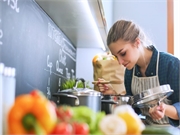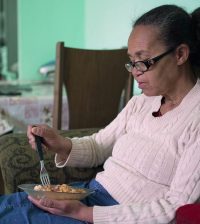- Navigating Your Midlife Crisis: Embracing New Possibilities
- City Raccoons Showing Signs of Domestication
- Mapping the Exposome: Science Broadens Focus to Environmental Disease Triggers
- One Week Less on Social Media Linked to Better Mental Health
- Your Brain Changes in Stages as You Age, Study Finds
- Some Suicide Victims Show No Typical Warning Signs, Study Finds
- ByHeart Formula Faces Lawsuits After Babies Sickened With Botulism
- Switch to Vegan Diet Could Cut Your Greenhouse Gas Emissions in Half
- Regular Bedtime Does Wonders for Blood Pressure
- Dining Alone Could Mean Worse Nutrition for Seniors
Cooking Up a Storm During Coronavirus Crisis? Store Leftovers Safely

Social distancing measures have many Americans cooking at home during the coronavirus pandemic, so one food safety expert has tips for storing and preparing leftovers properly.
One of the most important safety measures is to place perishable foods — those that require cold storage to be kept safe — in the refrigerator or freezer within two hours of being cooked, said Elizabeth Andress, a food safety specialist at the University of Georgia.
“Cooking doesn’t remove all bacterial concerns from foods — they still have to be kept at recommended temperatures,” Andress said in a university news release.
“After food is safely cooked, enjoy your meal, but within two hours of cooking food or after it is removed from an appliance keeping it warm above 140 degrees Fahrenheit, leftovers must be refrigerated,” she stressed.
Divide large amounts of food into shallow containers. Cut or slice roasts, hams and whole turkeys into small pieces placed in small containers. Other larger items like casserole dishes should be packaged in smaller portions.
Place leftovers in tightly sealed containers or wraps. For freezer storage, packaging should be moisture and vapor-resistant materials to prevent freezer burn. Plastics should be freezer weight and glass jars should be meant for freezing and have air-tight lids.
Label each package with the name of the food, ingredients and packaging date. Package foods in amounts you’re likely to use at one time.
When it comes to preparing leftovers, make sure your hands are clean and work surfaces like cutting boards and counters, food storage containers and utensils are properly sanitized.
It’s also “best to start with a clean apron and dish towels or wipes and not those you used in meal preparation that may have come in contact with food residues at room temperature themselves,” Andress said.
The safest way to thaw frozen leftovers is in the fridge. If leftovers are then to be reheated, reheat them to at least 165 degrees and check the internal temperature of the thickest part with a food thermometer. Bring gravies, sauces and soups to a rolling boil.
“Avoiding foodborne illness is important, so don’t take shortcuts or waste time in getting to this task of storing leftovers quickly at the end of the meal,” Andress said.
More information
The U.S. Food Safety and Inspection Service has more on leftovers and food safety.
Source: HealthDay
Copyright © 2025 HealthDay. All rights reserved.










